
New to the Gym? Here Are 3 Best Workout Plans to Kickstart Your Fitness Journey!
Starting out at the gym can be exciting, yet it’s easy to feel overwhelmed by all the options, machines, and fitness advice out there. For beginners, one of the most impactful choices is creating a structured workout plan that aligns with your goals.
This guide will walk you through why a structured plan matters, how to set achievable goals, and specific workouts you can start with to build confidence and strength.
Why a Structured Plan is Essential for Beginners

A well-structured workout plan is like a roadmap to your fitness success. It gives direction, builds consistency, and lets you monitor progress. Data shows that people who follow structured fitness programs achieve results faster and are more likely to maintain a regular gym routine compared to those who work out without a plan.
Benefits of Regular Gym Workouts for Health and Fitness
Regular exercise offers substantial physical and mental health benefits. Studies have highlighted the following key impacts:
- Cardiovascular Health: Engaging in moderate to vigorous exercise 3-5 times a week can lower blood pressure, reduce cholesterol, and decrease the risk of heart disease by nearly 50%.
- Muscle and Bone Strength: Weight-bearing exercises like squats and lunges not only build muscle but also help strengthen bones, which is especially important as we age. Research has shown that strength training increases bone density, reducing osteoporosis risk.
- Mental Wellness: A consistent exercise routine can reduce symptoms of anxiety and depression by up to 40%. Endorphins released during workouts improve mood and energy levels, which is especially beneficial if you’re adjusting to a new routine.
Setting Realistic Goals
Setting goals is essential to making your workouts purposeful and keeping yourself motivated. Research suggests that setting incremental, achievable goals can increase motivation and adherence to exercise programs by up to 42%.
- Start with Short-Term and Long-Term Goals
When beginning, consider setting both short-term goals (e.g., going to the gym three times a week) and long-term goals (e.g., losing 10 pounds or being able to do 10 push-ups). According to experts, setting smaller, achievable goals builds momentum and keeps you engaged over time. - Break Down Goals into Daily and Weekly Targets
Structure your goals into manageable actions. For example:- Daily Target: Complete a 15-minute cardio session or stretch each morning.
- Weekly Target: Add 2 minutes to your cardio duration every week or increase your weights slightly in strength sessions.
- Track Progress for Motivation
Use a fitness app, journal, or progress photos to keep track of your improvements. Data from fitness trackers shows that users who regularly monitor their progress are significantly more likely to stay on track.
Types of Workouts Ideal for Beginners
When you’re new to the gym, it’s important to include a balanced mix of cardio, strength, and flexibility workouts. Here’s a breakdown of each type and why it’s beneficial:
1. Cardio Workouts
Cardio improves your cardiovascular health, stamina, and calorie-burning efficiency.
- Walking: A simple yet effective option for beginners. A 30-minute brisk walk can burn about 150-200 calories and help strengthen your heart.
- Cycling: Whether on a stationary bike or a regular one, cycling is an accessible low-impact cardio workout that’s easy on the joints. Studies show it burns about 400-600 calories per hour.
- Elliptical Machine: The elliptical is a full-body, low-impact cardio machine, ideal if you’re prone to knee pain or prefer a gentler workout. You can vary the resistance to suit your fitness level.
2. Strength Training Basics
Strength training is crucial for building muscle, enhancing metabolism, and strengthening bones. Research supports the idea that even light resistance training, done consistently, increases strength significantly.
- Squats: Squats work your glutes, quads, and core. As a compound movement, they burn more calories and increase functional strength. Aim for 2-3 sets of 10-12 reps to start.
- Push-Ups: Great for building upper-body strength. If standard push-ups are too challenging, start with modified (knee) push-ups and work your way up.
- Lunges: Lunges strengthen your legs and glutes while also improving balance. Start with body weight, doing 2-3 sets of 8-10 reps per leg.
3. Flexibility and Mobility Exercises
Stretching and flexibility exercises increase your range of motion and reduce your risk of injury. A study of athletes showed that flexibility exercises significantly decreased injury rates and improved athletic performance.
- Dynamic Stretching: Before your workout, engage in dynamic stretches like leg swings, arm circles, or hip openers.
- Static Stretching: Post-workout, static stretches (e.g., holding a stretch for 15-30 seconds) help release tension and enhance recovery.
Creating a Weekly Routine

As you get started, aim for a balance between cardio, strength, and rest days. Below are sample routines to match different fitness schedules.
3-Day Beginner Plan
- Day 1: Full-body strength + light cardio warm-up (10 minutes)
- Day 2: Rest
- Day 3: Cardio session (20-30 minutes)
- Day 4: Rest
- Day 5: Full-body strength + stretching
4-Day Beginner Plan
- Day 1: Upper body strength + warm-up
- Day 2: Cardio session (20-30 minutes)
- Day 3: Lower body strength + stretching
- Day 4: Rest
- Day 5: Cardio + flexibility exercises
5-Day Beginner Plan
- Day 1: Full-body strength
- Day 2: Cardio (20 minutes) + stretching
- Day 3: Core + flexibility exercises
- Day 4: Strength training (alternate muscle groups)
- Day 5: Cardio + cool-down
Essential Warm-Ups and Cool-Downs
Proper warm-ups and cool-downs prevent injuries and improve workout quality. A good warm-up increases your heart rate, improves blood flow, and prepares your muscles for exercise.
- Effective Warm-Up Exercises: Start with 5-10 minutes of low-intensity cardio, like brisk walking or cycling. Follow with dynamic stretches like leg swings, arm circles, and hip rotations.
- Cool-Down Exercises: Post-workout, spend a few minutes doing static stretching for the muscles you’ve worked. Focus on breathing and holding each stretch for 15-30 seconds.
Tracking Your Progress
Tracking your progress helps you stay motivated and see your improvements over time. Data from fitness apps shows that people who log their workouts are 39% more likely to achieve their goals.
- Strength Progress: Keep track of the weights you’re lifting, the number of reps, and the sets completed.
- Cardio Improvements: Track your distance, speed, or time spent on cardio.
- Flexibility: Note your range of motion in certain stretches to monitor progress.
Common Beginner Mistakes to Avoid
- Overdoing Workouts: Jumping into an intense routine too quickly can lead to burnout or injury. Research suggests that beginners should increase workout intensity gradually.
- Skipping Rest Days: Muscles need time to recover. Studies show that resting between workouts leads to 30% faster muscle recovery.
- Neglecting Proper Form: Proper form is essential for avoiding injury. Consider a few sessions with a trainer or use online resources to ensure good technique.
Frequently Asked Questions
Q: I feel intimidated at the gym. What can I do to feel more comfortable?
A: Remember, everyone at the gym is there to improve themselves. Start with quieter areas or use equipment you’re comfortable with. You could also bring a friend for added support.
Q: Is soreness normal for beginners?
A: Yes, soreness (known as DOMS—Delayed Onset Muscle Soreness) is common, especially when starting. Light stretching, staying hydrated, and active recovery can help relieve it.
Q: Should I change my diet?
A: Proper nutrition supports your workouts and recovery. A balanced diet with proteins, complex carbohydrates, and healthy fats is ideal. Protein helps rebuild muscles, and carbs provide the energy needed for workouts.
Conclusion
Starting at the gym is a powerful decision for your health and well-being. With a structured plan, achievable goals, and balanced workouts, you can build a routine that’s sustainable and enjoyable. Stick with it, track your progress, and celebrate each milestone along the way. Remember, every step forward is progress, and you’re already on the right track by setting goals and creating a plan!
